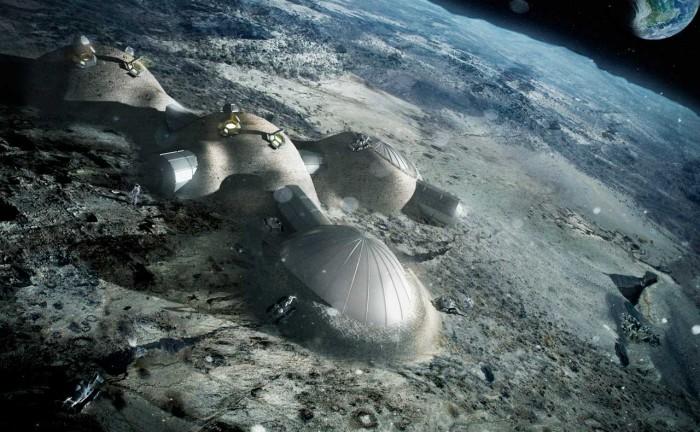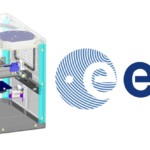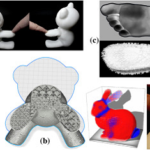

For a few years now, the European Space Agency (ESA) has been talking seriously about building a habitable village on the moon, and 3D printing is a big part of that plan. Because construction supplies can’t be feasibly transported in a spaceship, building habitats on the moon would involve 3D printing them from materials found on the moon’s surface. In a paper entitled “Additive Manufacturing for a Moon Village,” a group of researchers examines the feasibility of 3D printing structures on the moon, and what 3D printing technologies might be used to do so.
Five different structure concepts are presented in the paper:
- Spherical inflatable, a spherical pneumatic envelope with an interior structural cage to support the floors, walls and equipment
- Tuft-Pillow, a structural concept that consist of quilted inflatable pressurized tensile structures using fiber composites
- Lunar base cable structure in a crater, which would use natural features on the moon to reduce excavation and the amount of shielding that is needed
- Three-hinged arch main structure, an efficient way of coping with structural requirements
- Lunar lava tubes, which would involve building below the moon’s surface
The researchers discuss the idea of using in-situ resources, or regolith, the material found on the moon. Many simulations have been carried out already, with 3D printed structures being built from materials similar to those that naturally occur on the moon’s surface.
“Additive manufacturing techniques are required to be tested in analogues, because the Moon environment may affect both its operation and performance,” the researchers point out. “In particular, successful operation in vacuum with reduced gravity (approximately 17% of the Earth’s one) is crucial for the installation and later use of the machinery. In addition, the permanent exposition of the building to a harsh radiation environment as well as the micrometeorite striking should be assessed.”

The main characteristics that need to be reproduced for testing are chemical composition, mineralogy, particle size distribution and engineering properties. Moondust varies in constitution depending on where it is found on the moon, so those variations also need to be taken into consideration. The researchers then discuss the different types of additive manufacturing and how they could be applied to use with moon regolith, rejecting stereolithography, for example, as non-feasible with that kind of material. Powder bed fusion is highlighted as the best method, with lenses capturing solar rays replacing laser beams.
The researchers point to an experiment performed by Markus Kayser in 2010, in which beams of sunlight were used to 3D print sand in the desert. Using this method on the moon would require strategically locating the moon base in a highly sunlit area, such as the south pole, which has been proposed by the ESA.
“The Moon Village mission aims for the construction of a permanent base on the Moon surface capable of providing life-support for a long mission duration,” the researchers conclude. “Additive manufacturing techniques using in-situ resources have been considered an alternative to help the construction of the permanent base, because of the huge cost of sending mass to the lunar surface. The raw material to be used is the regolith, which can be broadly described as the dust obtained after centuries of micrometeorite striking. The Moon Village can be a suitable frame to further develop additive manufacturing, adapting it to solve the new challenges.”
Authors of the paper include Nuria Labeaga Martínez, M. Sanjurjo-Rivo, J. Díaz-Álvarez and J. Martínez-Frías.
Discuss this and other 3D printing topics at 3DPrintBoard.com or share your thoughts below.
When it comes to 3D real estate visualization in the USA, our service provides the perfect solution for bringing property listings to life. Through our platform, you can easily access cutting-edge 3D renderings that showcase your real estate projects in a way that attracts potential buyers and investors. Whether it's residential, commercial, or mixed-use properties, our team of experts uses advanced technology to create immersive visualizations that highlight the best features of your property, making it easier for clients to imagine the space as their own.
Through our website, you can quickly get high-quality 3D real estate visualizations that are tailored to your specific needs. With our help, you'll stand out in the competitive real estate market by offering potential buyers a realistic, interactive view of your property. Our efficient process ensures a fast turnaround time, while our attention to detail guarantees that every aspect of the property is represented accurately, giving you a powerful marketing tool to promote your real estate listings.






